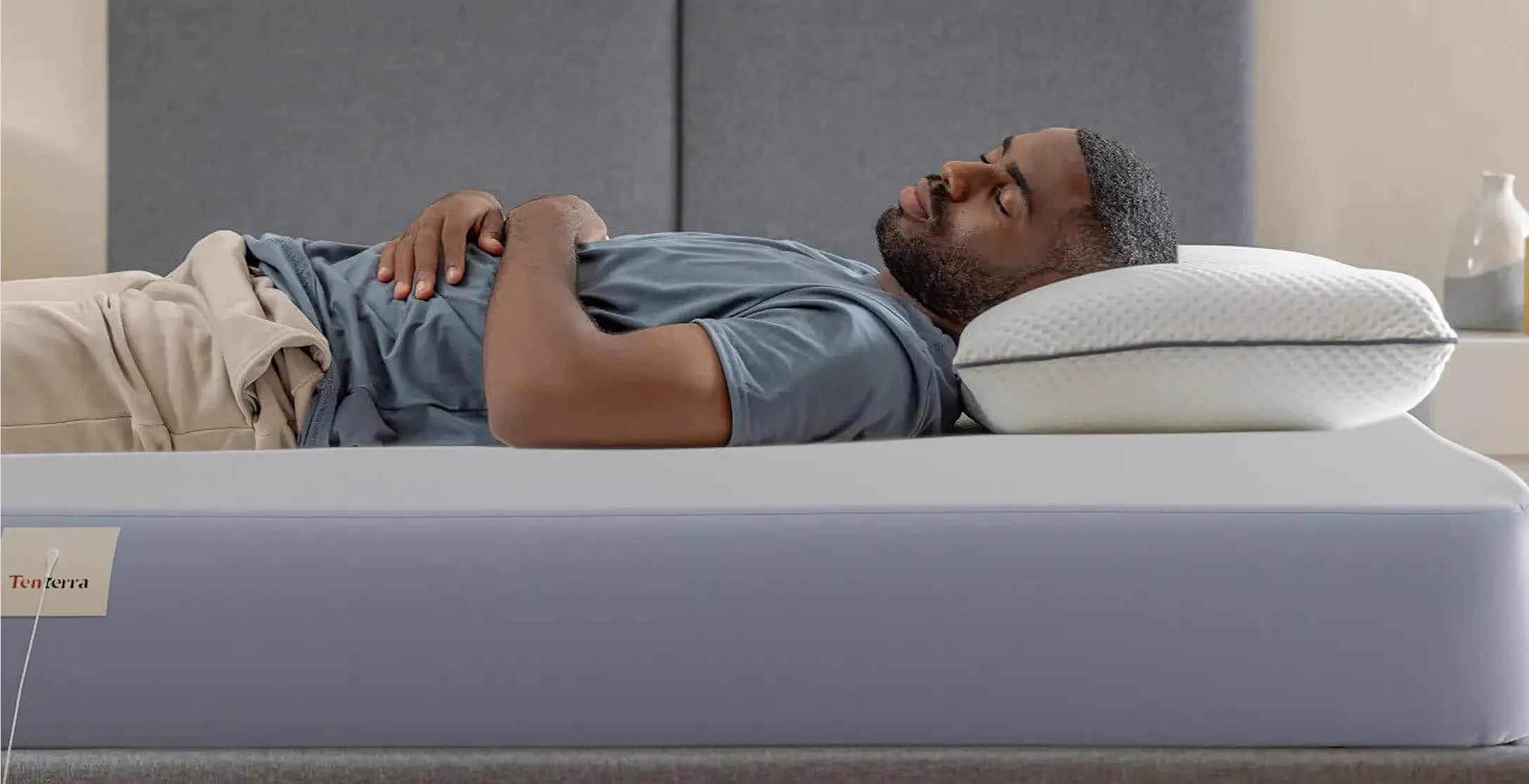
Testing Your Grounding Sheet: 5 Methods to Verify Effectiveness
Share
Grounding sheets are a powerful tool for supporting better sleep, recovery, and overall wellness—when they’re actually working. But how can you be sure your grounding sheet is truly effective and safe? Many users assume “plugged in” means “properly grounded,” yet studies and customer reports show grounding sheets can lose effectiveness due to wear, electrical issues, or user error.
With years of hands-on product testing, technical support experience, and input from professional electricians, I’ve seen every possible failure mode: broken wires, poor conductivity, and ungrounded outlets. Verifying your sheet’s effectiveness is not just a technical exercise—it’s about safety, peace of mind, and optimizing the benefits of earthing.
I. Why Test Your Grounding Sheet?
- Product issues: Even new sheets can have faults from manufacturing or shipping.
- Wear and tear: Repeated washing, rough use, and poor connections can break down conductivity.
- Electrical uncertainties: Not every outlet in your home is properly grounded.
- Peace of mind: DIY testing empowers you and keeps your wellness investment working.
In this guide, you’ll learn 5 proven ways to test your grounding sheet, including continuity tests, resistance measurements, outlet verification, body voltage testing, and advanced diagnostics.
You’ll also find a troubleshooting guide and maintenance tips. Consult our article on setting up and using your grounding sheting titled, " The Complete Guide to Using Grounding Sheets" for more details.
II. Grounding Sheet Basics: How Earthing Actually Works
A quality grounding sheet contains conductive silver or carbon threads that connect your body to ground via a cord plugged into the grounding port of a wall outlet. For earthing to be effective, the entire chain—from sheet to outlet to ground rod—must have low resistance and good continuity.
Common Failure Points:
- Sheet: Worn, torn, or corroded conductive material
- Cord: Broken internal wires, faulty snap connectors
- Outlet: Ungrounded or miswired outlets, GFCI interference
Testing isn’t just about effectiveness—it's about safety. A non-functional sheet offers no benefit, and a miswired outlet can present a risk. If you want to know more about grounding sheet basics, check out our guide: How Grounding Sheets Work.
III. Essential Testing Equipment and Safety
- Digital Multimeter: For continuity, resistance, and voltage tests (recommended models: Klein Tools MM300 for beginners, Fluke 117 for pros)
- Outlet Tester: Confirms correct grounding and wiring
- GFCI Tester: For extra electrical safety
- Basic PPE: Safety glasses, dry workspace, never test with wet hands
Always follow safety protocols. If you ever feel unsure, consult a licensed electrician—especially when testing your home's electrical system. Learn more about electrical safety in our Grounding Safety Guide for Apartments.
IV. Method 1: Basic Continuity Testing
- Unplug your grounding sheet. Place it on a dry surface.
- Set your digital multimeter to continuity mode (the “sound wave” symbol).
- Touch one probe to the silver threads or snap on the sheet; the other to the plug's ground pin.
- A beep or “0-2 ohms” reading means good continuity. No beep/high resistance means a problem.
- Repeat with the cord only (no sheet) to check for cord faults.
Troubleshooting: Clean connection points and check for visible damage. Flex the cord to detect intermittent faults.

V. Method 2: Resistance Measurement Testing
- With the multimeter in Ohms mode, place probes as in the continuity test.
- Measure resistance between sheet and plug. Ideal: under 5 ohms (most new sheets test under 2 ohms).
- Test at multiple spots for uniformity. Higher resistance at any point can indicate wear.
If resistance is high, clean all connectors and re-test. Persistent high resistance usually means the sheet, cord, or outlet is failing.

VI. Method 3: Outlet and Electrical System Verification
- Plug your outlet tester into the intended outlet. Check the light pattern (refer to tester chart).
- If your tester shows a problem (reversed wires, missing ground), don’t use this outlet for grounding. Consult a professional.
- Test all outlets you might use. Outlets can be miswired even in new homes.
Proper outlet grounding is critical—without it, your sheet can’t connect you to the earth.

VII. Method 4: Body Voltage Testing
- Set your multimeter to AC volts (lowest setting above 2V).
- With the sheet unplugged, hold one probe and touch the other to ground (metal water pipe or grounded outlet pin).
- Note your body voltage—typically 0.5–2.0V in a modern home.
- Plug in and lie on your grounded sheet. Wait 1–2 minutes, then retest.
- If the sheet is working, your voltage should drop to below 0.1V.

Body voltage testing is a powerful way to confirm your entire setup is functional. See our personalized grounding benefits calculator here.
VIII. Method 5: Advanced Multimeter Testing
- Use professional-grade meters for logging, RMS, or ground loop analysis if you want ultra-precise data (ideal for technical users or wellness pros).
- Advanced users can perform AC/DC voltage checks, temperature compensation, and trend analysis for long-term performance monitoring.
- For most users, the four methods above cover all essential checks.
If you suspect persistent problems after these tests, consult a professional or request a replacement from your supplier.
IX. Troubleshooting and Maintenance
- No continuity? Inspect and clean connections. Replace cords or sheets if necessary.
- High resistance? Clean, then retest. Replace if resistance remains high.
- Intermittent faults? Flex test the cord and connectors—replace as needed.
- Check and log test results monthly to ensure ongoing safety and effectiveness.
For in-depth troubleshooting, see Grounding Sheet Troubleshooting Guide.
X. Conclusion and Best Practices
- Test your grounding sheet before first use and regularly thereafter.
- Keep all connectors clean and dry; replace worn cords promptly.
- Always prioritize safety—when in doubt, seek professional help.
- Well-maintained grounding sheets deliver powerful benefits for years—verify yours is truly working!
Ready to upgrade your grounding setup? View our tested grounding product.
Need more help? Contact our support team for technical questions or troubleshooting.
References
- Ghaly, M. & Teplitz, D. (2004). The biologic effects of grounding the human body during sleep as measured by cortisol levels and subjective reporting of sleep, pain, and stress. Journal of Alternative and Complementary Medicine, 10(5), 767–776.
- Oschman, J. L. (2007). Can electrons act as antioxidants? Journal of Alternative and Complementary Medicine, 13(9), 955–967.
- Chevalier, G. et al. (2012). Earthing: Health implications of reconnecting the human body to the Earth’s surface electrons. Journal of Environmental and Public Health, 2012.
- National Electrical Code (NEC) 2023.
- EPA (2022). EMF exposure and grounding systems.
Frequently Asked Questions about Testing Grounding Sheets
What is the fastest way to test if my grounding sheet works?
The quickest test is a multimeter continuity check. Unplug the sheet, place the multimeter probes on the snap and ground pin, and listen for a beep or look for a reading below 2 ohms. For a full step-by-step, see our detailed multimeter testing guide.
How often should I test my grounding sheet?
For best results and safety, test monthly. Perform a continuity check after each wash or whenever you notice a change in sleep or wellness. Log results to track trends.
What resistance reading is considered good for grounding sheets?
Ideally, the resistance should be under 5 ohms, and most new sheets read below 2 ohms. Higher resistance indicates poor conductivity, so clean or replace as needed.
Do I need a professional electrician to test my grounding sheet?
Most tests can be performed safely at home with a digital multimeter and outlet tester. However, if your outlets are ungrounded, miswired, or you’re uncomfortable, always consult a licensed electrician.
Can a grounding sheet work if my outlet is not properly grounded?
No. If the outlet is not grounded, the sheet cannot provide the benefits of earthing. Always verify your outlet with an outlet tester before use. For more, see our outlet testing guide.
Why do some people notice no benefits from their grounding sheet?
Common reasons include ungrounded outlets, broken cords, worn conductive threads, or incorrect usage. Regular testing and proper setup are essential for optimal results.
Is body voltage testing necessary for everyone?
Body voltage testing is not essential for basic verification, but it’s an excellent way to confirm the full system is working—especially if you want data on your actual EMF exposure reduction.
Where can I get replacement cords or accessories for my grounding sheet?
Replacement parts and cords are available in our Grounding Accessories Collection. If you have questions, our support team is here to help.



1 comment
Can I ground my sheets to a hot water heating pipe that is testing good for ground?